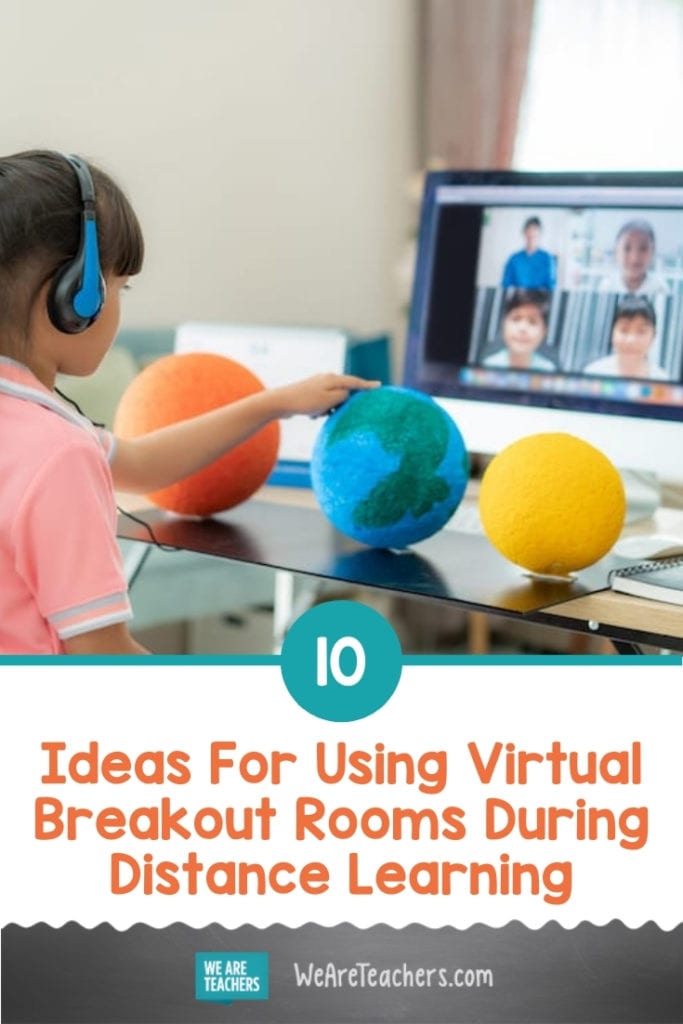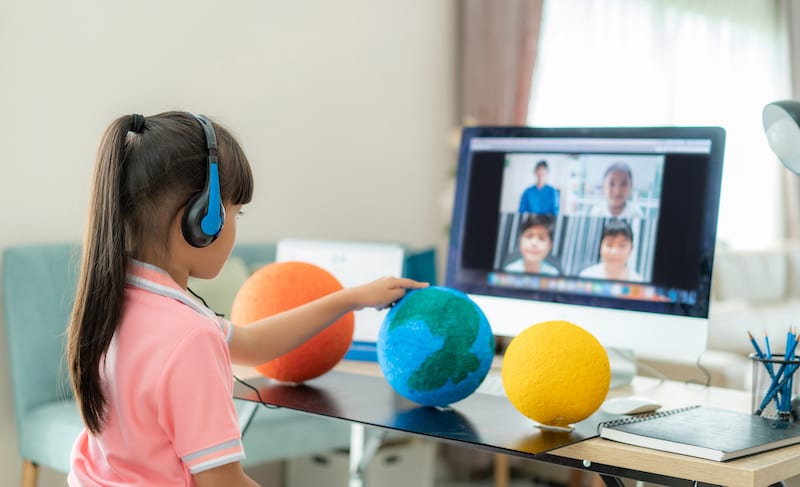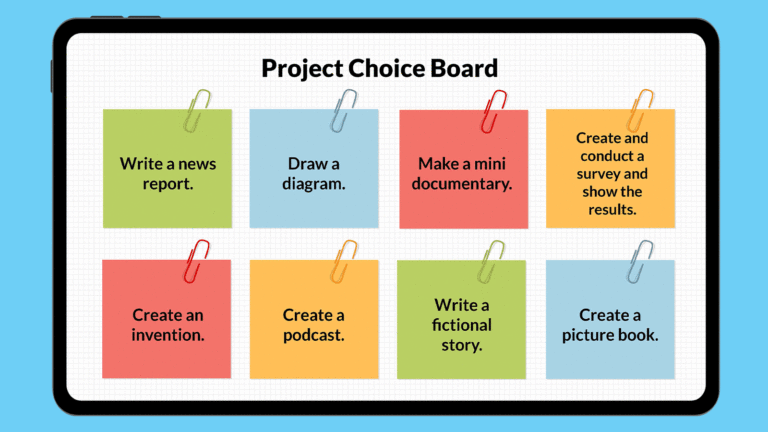As many of teachers transition to online teaching this Fall, you might be wondering: how can I facilitate group work online? Don’t worry! You don’t have to remove Jigsaws or Think, Pair, Share from your lesson plans. Virtual breakout rooms are easy to set up (either ahead of time or in the moment). They even have exciting features that allow you to “circulate” the room or share messages with the whole class. Here’s everything you need to get started, and our 10 favorite ways to use virtual breakout rooms for online learning.
Here’s how it works
If you’re using Zoom, first set up the breakout room setting. Then, you can pre-assign or auto-assign breakout rooms. This article walks you through the step-by-step process (it’s easy and fast). This tutorial shows you how to set up your rooms and how to maximize every feature to engage students and enhance their learning. If you’re using Google Meet, check out this video to get started.
Setting up your students
Before you put students into breakout rooms, explain when you will use them. Talk about how you will use them. Most importantly explain why you will use them. Show them a short video that explains how the rooms work. Model the process. Then, try it once, and reflect. It’s important to lower the stakes when you are introducing a new tool. Establish a routine where students know that breakout rooms are a consistent part of learning online.
[contextly_auto_sidebar]
Your teacher toolkit:
Circulate
You can leave the main room and pop into breakout rooms. It’s the virtual version of circulating your classroom to check in on small groups. These check-ins allow you to ask clarifying questions, build on students’ ideas, and observe. Moving in and out of the breakout rooms also holds kids accountable for the learning task.
Send messages
When teachers facilitate small groups in brick and mortar classrooms, they often display a visual timer or remind students how much time they have left. You can send a message from the main room to all the breakout rooms to keep your students’ on task, share directions, or add other helpful reminders.
Poll for feedback
Because working in breakout rooms is new for students, use the polling feature to gather student feedback once everyone is back in the main room. If you plan to use breakout rooms consistently, it’s important to find out what students’ experience was like so you know what adjustments or supports you need to put into place.
Our favorite ways to use breakout rooms:
1) Book Buddies
We love that students can read to a sibling or caretaker when they are learning from home. But what about reading to each other? Pair students so they can buddy read in a breakout room. Pop into the rooms to listen for fluency and expression, ask questions, and informally assess comprehension. Mix up the pairs so your kids can get to know each other and build relationships. Pro tip: ask students to grab a favorite book before the class meets online.
2) Jigsaw
This activity works especially well when you have a long text, but you are short on time. It also deepens reading comprehension as students focus on one page. First, make sure your kids have access to the text. Put it in the learning management system or whatever organizing tool you use (class website, Seesaw, etc). Next, ask students to open up the text. Put the students into breakout rooms where each room represents one page. Students read their section together, discuss it, and choose a speaker to summarize what they read to the whole group once the breakout rooms close.
3) Four Corners Debate
In the main room share a statement with your students. Tell them that there are four stances they can take: strongly agree, agree, strongly disagree, and disagree. Give students time to think and make a choice. Students type their stance into the chat. Place students into breakout rooms based on their chosen stance. Once in their rooms, students develop an argument and choose a group speaker. When everyone comes back together, each speaker shares out. Students can type in the chat if they’ve changed their minds.
4) Strategic Small Groups
One of the biggest worries about lost learning time is that students have fallen significantly behind. You may feel pressure to slow down or teach lower than grade level content. Differentiate instruction by designing learning tasks for each breakout room and strategically grouping students. This is your opportunity to remediate and fill in the gaps.
5) Peer Editing and Feedback
Use breakout rooms to put students into pairs or small groups for peer editing and feedback. We love using Glows and Grows. Another of our favorite feedback protocols is PQS (praise, question, suggestion).
6) Literature Circles
Lit circles give kids an opportunity for choice. You can group students based on their reading level. Pro tip: assign specific group roles to hold students accountable, and help them practice different reading strategies. Students can meet in their virtual breakout rooms to discuss the chapter they read the night before.
7) Project-Based Learning
Collaborating in small groups to solve problems and work towards completing a larger task are at the heart of PBL. Breakout rooms are an ideal space for your kids to meet in their groups and move their projects forward.
8) Choice Board
Engagement is challenging online. Consider trying a choice board where you create different activities for practicing the same skill or learning about the same topic. In the main room, present the choices. Put students into breakout rooms based on what they select.
9) Strategy Groups
Reading and math teachers, this one works especially well for you. In the main room review the strategies students are learning. Give students the same problem set or text. Then, place the students into breakout rooms where each room has a different strategy. While in their rooms, students use the strategy to solve the problem or read the text. When everyone comes back together, each group shares how they used the strategy.
10) Share Sessions
Our kids miss each other and their friends. It’s important to give them time to chat and socialize. This activity works well during a weekly class meeting or right after. Share some discussion starters with your students, and place them in small groups in breakout rooms. When everyone comes back together, ask students to share an “ah ha” moment or a connection they had with another student.
How are you using virtual breakout rooms? Share in our WeAreTeachers HELPLINE group on Facebook.
Plus, Everything Teachers Need to Know About Zoom for Online Teaching.


